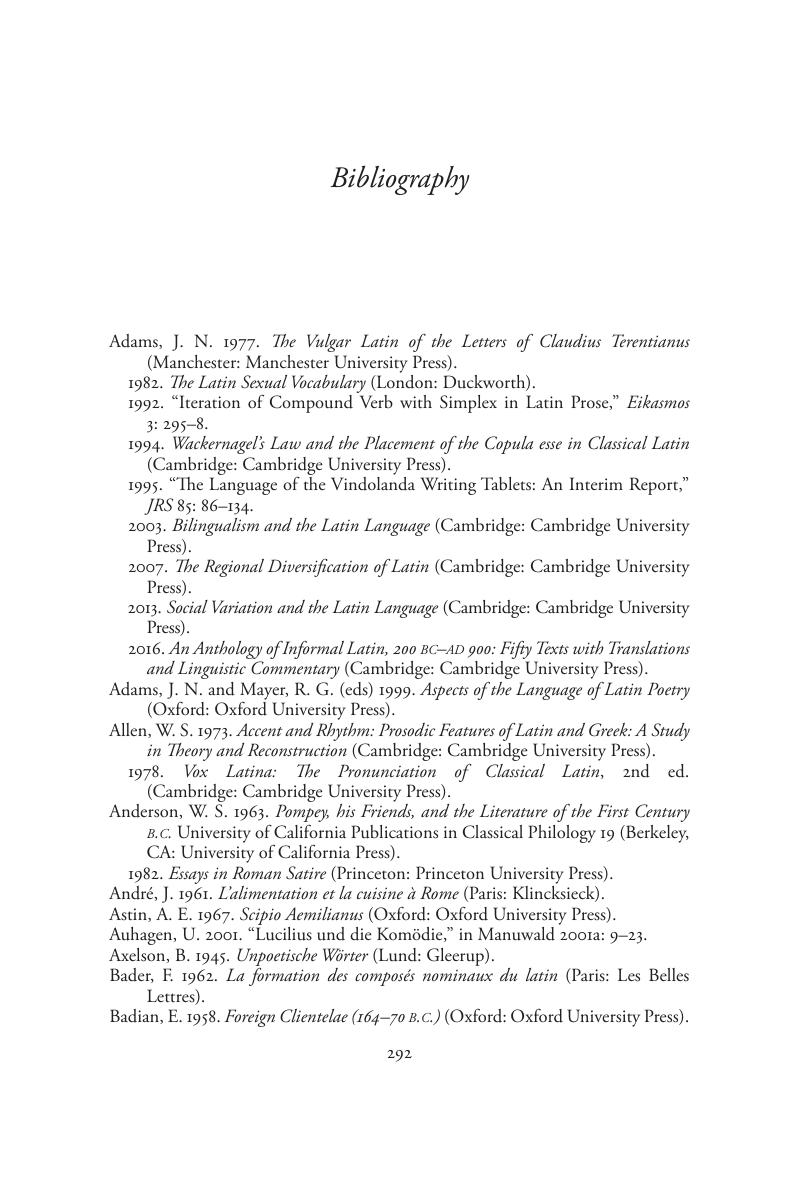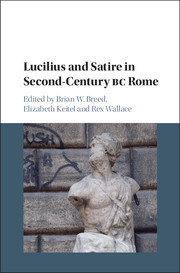Book contents
- Lucilius and Satire in Second-Century bc Rome
- Lucilius and Satire in Second-Century bc Rome
- Copyright page
- Contents
- About the Contributors
- Acknowledgments
- Abbreviations
- A Note on References
- Chapter 1 Introduction
- Part I Putting Lucilius’ Satires in Context
- Part II Lucilius’ Language, Style, and Meter: Continuity and Innovation
- Part III Generic and Social Settings for Lucilian Satire
- Bibliography
- Index Locorum
- Index Rerum
- References
Bibliography
Published online by Cambridge University Press: 16 February 2018
- Lucilius and Satire in Second-Century bc Rome
- Lucilius and Satire in Second-Century bc Rome
- Copyright page
- Contents
- About the Contributors
- Acknowledgments
- Abbreviations
- A Note on References
- Chapter 1 Introduction
- Part I Putting Lucilius’ Satires in Context
- Part II Lucilius’ Language, Style, and Meter: Continuity and Innovation
- Part III Generic and Social Settings for Lucilian Satire
- Bibliography
- Index Locorum
- Index Rerum
- References
Summary

- Type
- Chapter
- Information
- Lucilius and Satire in Second-Century BC Rome , pp. 292 - 311Publisher: Cambridge University PressPrint publication year: 2018

